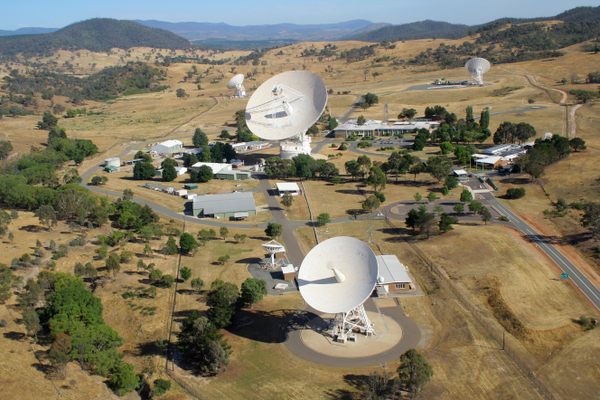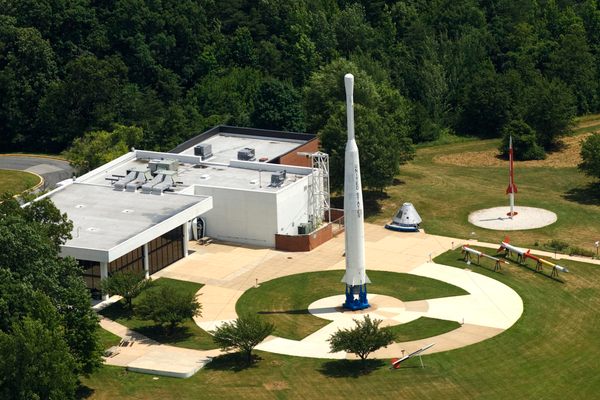About
The Neil A. Armstrong Test Facility (formerly known as Plum Brook Station) is part of NASA’s Glenn Research Center in Ohio. Here, highly specialized facilities allow NASA and the international space community to carry out complex and innovative ground tests.
Plum Brook Station is located on 6,400 acres of land near Sandusky, Ohio, about 50 miles west of the main Glenn Research Center campus. It has served a number of functions over the years, and some facilities have been decommissioned, including the Plum Brook Nuclear Reactor, which NASA once used for space-related nuclear energy research and development.
Today, a handful of test facilities are currently operational at Plum Brook, all of which rank among the largest and most powerful space environment simulation facilities in the world.
These include the Reverberant Acoustic Test Facility, which is like something from the wildest dreams of Spinal Tap. The world's most powerful spacecraft acoustic test chamber, it’s capable of simulating the noise of a spacecraft launch up to 163 decibels, or as loud as the thrust of 20 jet engines.
Then there’s a wind tunnel called the Hypersonic Tunnel facility, which allows NASA to test the aircraft of the future at speeds up to seven times the speed of sound. And at the Mechanical Vibration Facility, spacecraft launch conditions can be tested in what is the world's most powerful spacecraft shaker system.
The Space Power Facility, meanwhile, is the largest vacuum chamber in the world. It’s used for testing full-scale space hardware, including parts of rockets, Mars landers, and space stations. It was also used to shoot some scenes from the 2012 Marvel movie The Avengers.
Despite the undeniably impressive facilities at Plum Brook, the station has its problems. In 2015, a report from NASA’s inspector general made the disconcerting announcement that all but one of the major test facilities at Plum Brook Station had few or no customers. And considering the cost of maintaining them, this was no small issue.
Some of the main facilities hadn’t been used for years. The B-2 Spacecraft Propulsion Research Facility had last been used in 1998, and both the Hypersonic Test Facility and the Cryogenic Components Laboratory hadn’t been used in four years. Plum Brook’s newest addition, the Combined Effects Chamber, which was designed to simulate the conditions found on the surface of the Moon or Mars, had never been used.
The only real success story in terms of actual customers was, and still is, the Space Power Facility. The cavernous vacuum chamber continues to attract a steady stream of customers, including SpaceX, which has tested both its Falcon 9 rocket and Dragon spacecraft at the facility. NASA also used the Space Power Facility to test its Orion Multi-Purpose Crew Vehicle.
Whether funds continue to pour into Plum Brook Station remains to be seen. Some facilities have already been penciled in for demolition, including the Cryogenic Components Laboratory. The fate of the other facilities will largely depend on the whims of politicians and humankind’s continued desire to reach beyond our planet.
In August 2021, the facility was renamed to honor Apollo astronaut and Ohio native Neil Armstrong.
Related Tags
Know Before You Go
Plum Brook Station is located about eight miles from Sandusky, Ohio. The station isn’t typically open to the public, although Open House events have been run in the past, allowing visitors to tour the various facilities. Any other potential visits would have to be arranged by contacting Glenn Research Center or Plum Brook directly.
Community Contributors
Added By
Published
December 12, 2018
Updated
April 11, 2022
Sources
- https://www.nasa.gov/centers/glenn/about/testfacilities/index.html
- https://www.portman.senate.gov/public/index.cfm/press-releases?ID=B692881D-A7BD-4FCC-BCE1-6083C79CB14F
- https://spaceflightnow.com/2018/07/14/spacexs-first-space-worthy-crew-dragon-capsule-arrives-at-cape-canaveral/
- https://spacenews.com/nasa-ig-scrutinizes-seldom-used-plum-brook-test-facilities/
- https://www.spaceflightinsider.com/space-flight-news/nasa-plum-brook-station-gearing-b-2-facility-future-upper-stage-lander-rocket-tests/






























